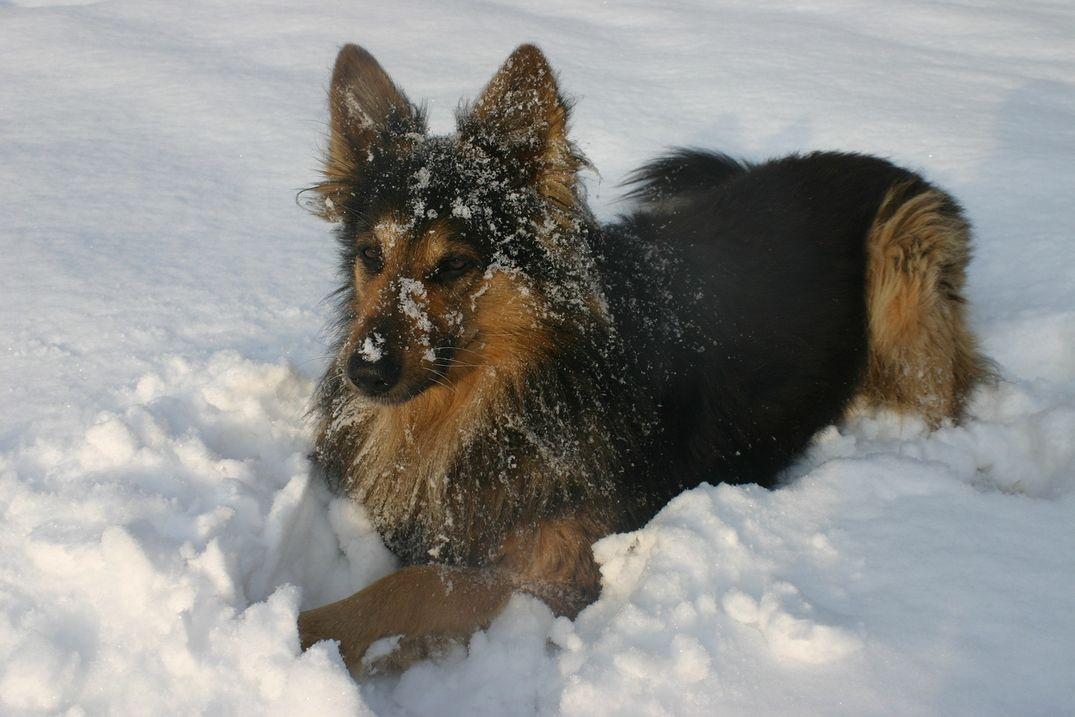Walking your dog daily is an important part of their routine and keeps them fit, healthy and helps reduce stress. But in freezing conditions it can be easy to make excuses not to take them out. So when is it actually too cold to take your dog for a walk? And what should you do to help them keep warm in sub-zero temperatures? Below we have a brief guide on helping you decide.
How cold is too cold to take your dog out?
The breed of your dog will be the main determiner for when it’s safe for it to go outdoors in very cold weather. Small and medium breeds with thinner coats will struggle in -4°C conditions. Bigger dog breeds with thicker coats can withstand temperatures of -6°C.
At -7°C dogs are at a risk of developing hypothermia and frostbite and going in these conditions is not recommended for most breeds.
If you need to stay inside with your dog to avoid extreme weather, see our How To Keep Your Dog Entertained Indoors article for ideas on keeping them active and stimulated.
How long should dogs be out in the cold?
Large breeds can walk in -6°C for about 30 minutes, while smaller breeds should be limited to walks of fewer than 20 minutes in freezing temperatures.
Dogs should never be left outdoors when the weather drops below 10°C. However, it does depend on the breed. The thick coats of Siberian husky’s can withstand extreme below freezing temperatures, but lean breeds like whippets or greyhounds will be a lot more sensitive to the cold.
Hypothermia
Being out freezing temperatures for long periods means your dog can be at risk of developing hypothermia. Hypothermia happens when body temperature drops dangerously low causing a slow, irregular heartbeat and damage to vital organs.
UK animal charity PDSA have in depth advice on hypothermia in dogs here.
Frostbite
Just like humans, dogs can develop frostbite. Frostbite is tissue damage caused by exposure to extreme cold and occurs when blood flow is decreased or stops getting to certain areas of the body.
Areas susceptible to frostbite in dogs include:
- Ears
- Tail
- Toes and paws
- Nose
- Scrotum
Frostbite can develop in just 15 minutes in certain conditions (such as if there is a high wind and temperatures below freezing) so it’s important to check on your dog regularly when out walking to see if these extremities are getting too cold. In extreme cases, frostbite can lead to body parts rotting and being lost.
How to tell if your dog is getting too cold
Being vigilant to your dog’s behaviour is a good way of judging if they are getting too cold. Common signs of your dog struggling to keep warm include:
- Trembling or shivering
- Very cold ears
- Whimpering
- Hunched back and tucked in tail
- Anxious behaviour and unwillingness to continue walking
- Limp or stiff movement
- Lifting paws off the ground
Walking in snow or ice
When walking in ice and snow you should regularly check to see if your dog’s paws are becoming too cold. Be observant to your dog lifting up their paws, limping or whimpering and whining when walking, which all could indicate their paws are becoming too cold.
Remove any ice or snow on their paw pads, or is stuck on the fur between their toes. You should regularly check for this as it can be very uncomfortable and could risk developing into frostbite.
If you are planning longer walks on snow, you can look into getting dog boots. These boots help keep your dog’s feet warm and dry and will have added grip to help them on icy surfaces.
Dog vests and jackets
Dog jackets are a great way of keeping your dog insulated in the cold. A good quality dog jacket or vest should also be waterproof and keep your dog dry in the rain and snow.
Neoprene is a good choice of material when choosing a jacket as it provides excellent thermal insulation, provides wind protection, highly durable, and is easy to clean.
See our Keeping Your Dog Warm on Winter Walks article for more information on the best gear and equipment you can buy.
General walking safety tips in the cold
- Take a towel with you to dry off any ice and snow from your dog’s fur.
- In the snow always keep your dog on a lead. There may be deep areas or holes covered by the snow.
- Antifreeze is extremely poisonous to dogs so be mindful. People use the chemical on driveways and pavements in front of their houses.
- Don’t let your dog walk on frozen ponds. It’s hard to judge the thickness of ice and how much weight they can take, even for very small breeds.
- You should never leave your dog in the car on freezing cold days.






